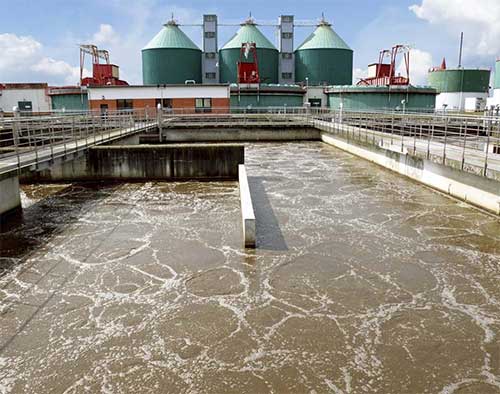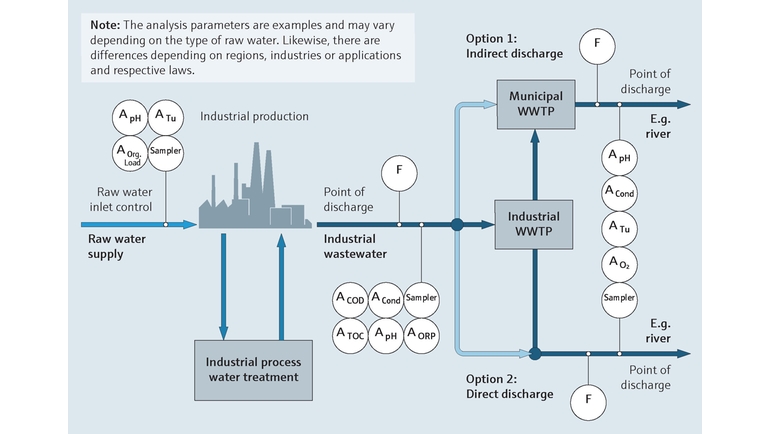Industrial Waste Water Treatment-- Comprehensive Equipments for Wastewater Disposal
Industrial Waste Water Treatment-- Comprehensive Equipments for Wastewater Disposal
Blog Article
Advancements and Breakthroughs in Industrial Waste Water Therapy Technologies
The landscape of industrial wastewater treatment is undertaking a transformative shift, driven by advancements that enhance both performance and sustainability. Arising modern technologies, such as membrane bioreactors and microbial fuel cells, are redefining impurity removal processes while adding to energy generation. Source recovery techniques are obtaining grip, aligning with circular economic climate principles. As regulative criteria evolve, the assimilation of AI and artificial intelligence into wastewater monitoring systems guarantees to guarantee and simplify procedures conformity. The full ramifications of these innovations raise important concerns regarding their scalability and long-lasting effect on industry methods.
Introduction of Drainage Treatment Technologies
Wastewater therapy modern technologies include a series of techniques created to get rid of impurities from commercial effluents before their release right into the environment. These innovations are critical for preserving environmental balance and ensuring compliance with environmental laws. The primary classifications of wastewater therapy include physical, chemical, and organic approaches, each offering unique functions based on the nature of the contaminants present.

Biological therapy techniques utilize microbes to weaken raw material, making them especially effective for organic-rich effluents. Methods like turned on sludge and biofilm activators harness the natural degradation capabilities of bacteria, bring about substantial reductions in biochemical oxygen demand (FIGURE)
Advanced Filtering Methods
Advanced purification strategies stand for an important advancement in the world of commercial wastewater treatment, boosting the effectiveness of impurity elimination procedures. Industrial Waste Water Treatment. These approaches incorporate a series of technologies, consisting of microfiltration, ultrafiltration, nanofiltration, and reverse osmosis, which offer sequential barriers for various bit sizes and chemical frameworks
Microfiltration and ultrafiltration make use of membrane layer systems to remove put on hold solids, microorganisms, and larger natural molecules, enhancing the quality of effluent prior to more treatment. Nanofiltration bridges the space in between ultrafiltration and reverse osmosis, effectively getting rid of divalent ions and organic compounds, hence decreasing the load on downstream procedures.
Reverse osmosis offers the highest possible level of purification by enabling only water and small particles to pass through its semi-permeable membranes, making it perfect for reclaiming high-quality water from commercial effluents. Current advancements in membrane layer modern technology, including the advancement of even more durable and fouling-resistant materials, have significantly improved functional efficiency and reduced costs.
Incorporating these sophisticated filtering techniques not just improves the general treatment procedure yet likewise adds to sustainability initiatives by enabling water reuse and source recovery in industrial settings. (Industrial Waste Water Treatment)
Biological Therapy Innovations

In addition, the development of crafted organic systems, such as membrane bioreactors (MBRs), incorporates organic therapy with advanced membrane filtering. This assimilation enables higher effluent top quality and reduced impact, making it ideal for space-constrained industrial centers. Innovations in genetically engineered bacteria have actually likewise arised, boosting the biodegradation of certain contaminants, such as pharmaceuticals and heavy steels, that are traditionally testing to get rid of.
Additionally, the application of bioaugmentation methods, where beneficial microorganisms are presented to improve the existing biological therapy processes, has shown encouraging cause improving treatment performance. These technologies collectively indicate a trend in the direction of more efficient and sustainable organic treatment approaches that can adapt to the developing intricacies of industrial wastewater streams. As sectors continue to prioritize ecological conformity, these biological technologies will play a crucial function in wastewater monitoring.

Source Recuperation Methods
In industrial settings, the integration of resource recuperation approaches has actually come to be significantly essential for boosting sustainability and decreasing waste. These techniques concentrate on removing beneficial products and power from wastewater streams, thereby changing possible toxins into multiple-use resources.
One noticeable technique is nutrient healing, where nitrogen and phosphorus, typically existing over in wastewater, are caught and exchanged fertilizers. This not only minimizes ecological impacts however also offers a round economy remedy for farming applications. Additionally, modern technologies such as anaerobic food digestion allow for the conversion of organic waste right into biogas, a renewable power source that can balance out nonrenewable fuel source use in commercial operations.
Furthermore, advanced filtering and membrane modern technologies facilitate the recovery of commercial by-products such as steels and salts. click here for info These recouped products can be rehabilitated right into manufacturing procedures, reducing the demand for virgin sources.
Future Fads in Waste Water Monitoring
As markets significantly focus on sustainability, the future of wastewater administration is readied to undergo significant makeovers. Technological improvements, such as fabricated knowledge and maker knowing, will certainly enable extra efficient surveillance and administration of wastewater systems. These modern technologies can predict maintenance requirements, optimize treatment procedures, and enhance decision-making, ultimately reducing functional expenses and environmental effect.
In addition, the integration of circular economic climate principles will certainly play a crucial function in wastewater monitoring. Industries are expected to shift in the direction of systems that not just deal with wastewater but additionally recuperate important resources, such as nutrients, water, and energy. This transition will reduce waste and promote the reuse of materials, lining up with international sustainability objectives.
Arising treatment strategies, such as membrane layer bioreactors and progressed oxidation processes, will additionally improve the effectiveness of wastewater therapy, permitting higher quality effluents ideal for reuse. Resources In addition, regulatory frameworks are most likely to progress, stressing stricter requirements for wastewater discharge and encouraging industries to adopt cutting-edge therapy remedies.
Verdict
In verdict, the evolution of commercial wastewater therapy innovations demonstrates a substantial shift towards boosted effectiveness and sustainability (Industrial Waste Water Treatment). Advancements in advanced purification strategies, organic therapies, and resource recovery techniques highlight the industry's dedication to environmental stewardship.
The landscape of commercial wastewater treatment is undertaking a transformative change, driven by innovations that enhance both performance and sustainability.Wastewater treatment innovations include a variety of methods developed to eliminate impurities from industrial effluents prior to their launch into the atmosphere.Taking advantage of the power blog of biological procedures has led to significant advancements in the treatment of commercial wastewater.Furthermore, the execution of bioaugmentation approaches, where valuable microbes are presented to boost the existing organic treatment processes, has actually shown appealing outcomes in enhancing treatment performance. These innovations jointly represent a trend in the direction of even more lasting and reliable organic treatment approaches that can adjust to the evolving complexities of commercial wastewater streams.
Report this page